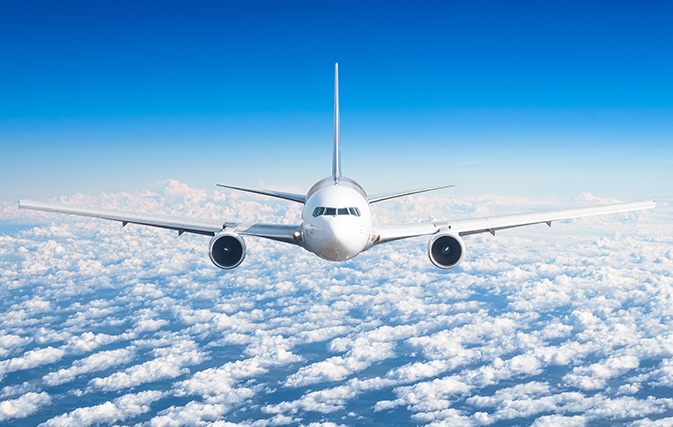TORONTO — ‘Canada’s Flight Plan’ is a step in the right direction, and hopefully a sign of better days to come.
But in real terms the plan is mostly a roundup of health and safety measures that Canada’s airlines and airports are doing already, and have been doing for months amid the pandemic, from mandatory masks to temperature checks.
The real stumbling blocks for getting Canadians to travel again – apart from waiting to see if there’s a second wave of COVID-19 this fall – is the mandatory 14-day quarantine for returning Canadian travellers, coupled with the difficulties in getting travel insurance coverage for COVID-19 in light of the federal government’s blanket travel advisory against non-essential travel, still in place after five long months.
“I think until the travel advisory from the government is lifted we are going to see very little travel. Once that is lifted, then insurance will be applicable and it will cover 2 of the 3 big concerns. Then at least individuals can determine their own comfort level with travelling and risk of getting COVID-19,” says Carl Henderson, CTM, whose TPI travel agency is based in Oakville, ON.
AIRLINE & AIRPORT PROTOCOLS
Officially called ‘Canada’s Flight Plan for Navigating COVID-19’, the new document, announced Aug. 14 by Transport Minister Marc Garneau, could potentially lay the groundwork for reopening more travel, in a safe but effective way, after five long months.
Points in the plan apply to all aspects of air travel, including in airports and aircraft.
They include travel restrictions; mandatory use of face masks for passengers and crew; mandatory health checks by air carriers prior to passenger boarding; temperature screening at the busiest Canadian airports and at points of origin for all incoming flights to Canada; restricted services and passenger movement during flights; and enhanced cleaning and sanitation protocols and practices.
In airports, the plan’s measures include enhanced air conditioning and filtration systems; frequent cleaning of high-touch areas; touchless technologies to scan boarding passes; and physical distancing measures.
Air Canada, WestJet as well as the GTAA and the Vancouver Airport Authority all voiced their support for Canada’a Flight Plan. Air Canada, WestJet and many others are part of the #TimeToTravel movement.
“By aligning the Canadian aviation sector with best international practices for customer health and safety, the Government of Canada has now established the necessary science-based preconditions that assure customers of the highest levels of safety for air travel and for reopening Canadian aviation across provinces and to the world,” said Calin Rovinescu, President and Chief Executive of Air Canada.
Canada’s chief public health officer, Dr. Theresa Tam, noted earlier this month that so far there hasn’t been a confirmed case of in-flight transmission of COVID-19.
WHAT AGENTS ARE HEARING FROM CLIENTS
Travellers may be concerned about flights, especially long-haul, but anecdotal evidence suggests those concerns take a backseat to the 14-day mandatory quarantine for all travellers returning to Canada, and the one-two punch of the global travel advisory against non-essential travel, which triggered the lack of COVID-19 coverage from insurance providers. Travellers are also worried about getting stranded if there’s another lockdown.
Some COVID-19 coverage is starting to pop up here and there, so far from Blue Cross Ontario, Blue Cross Quebec and B2C insurer Medipac. Some countries, airlines and resorts are offering their own insurance. Many Canadians may not know these options are available.
Travel consultant Henderson says his clients’ biggest concerns vary depending on who they are.
“The elderly or any kind of higher risk, they’re not interested in travelling. On planes there is no social distancing which is a concern [for them]. They would be more comfortable perhaps with a middle seat empty but flying is a big concern for that age/health group.”
Henderson adds that the 14 day quarantine is “definitely a concern for everyone.” And insurance is the “other huge concern. And personally I cannot promote and recommend to clients to travel south when they can’t have proper insurance coverage and the government ban is still on.”
Mary Tereshyn, CEO, Operations for 510 Travel says the biggest concern her agents hear about from clients is still travel insurance. “The major concern is travel insurance. Everyone’s fear is to get sick in destination and being denied boarding on their flight home. If you do get sick where will you quarantine in destination? And who will pay for this?” says Tereshyn.
And then there’s the 14-day mandatory quarantine. “Most travellers cannot afford the money or time to quarantine for 14 days on arrival back home in Canada,” says Tereshyn, adding that while a lot of clients are waiting for a vaccine, “most clients are waiting for the Canadian government to lift the travel advisory.”

